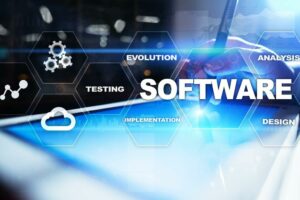Content
A roadmap is a guiding tool that provides visibility into the project without revealing the tasks in detail. Therefore it is a vital tool for product managers and project managers. You now have a flexible, powerful visualization of your entire technology roadmap, and all in just a few minutes. Below we’ll share three different technology roadmap examples to help get your creative juices flowing. Office Timeline helps you quickly turn complex project data into clear PowerPoint roadmaps that are easy to follow, but hard to forget. So here are a series of guidelines on how to effectively update, share and present impactful roadmaps that convey relevant information in a quick and clear manner.

At this stage of the IT Strategy, strategy meets execution, and hence, this is an important step. From an understanding of the business goals, one derives a set of IT priorities, which in turn culminate into a set of strategies and an operating model. Taking stock of the state of affairs in the technology realm is a critical step in the IT Strategic planning process. Whether it is an in-depth assessment or a cursory review will depend on the maturity of the IT department. A comprehensive evaluation may be necessary if the enterprise is embarking on a significant transformation. The second facet of an effective IT strategy and roadmap is how the IT department operates and minds its business.
Hence, anyone who participates in the future state envisioning needs to be open-minded and imagine the future on a clean slate. Today, vendors, including the many startups, are developing innovative concepts and technologies in various facets of B2B space. Keeping abreast of the vendor landscape is critical to allow the enterprise to make, buy, build, acquire type decisions. All 45+ of our roadmap templates can be accessed in Roadmunk for free. And with the right tool, you can roll up all those different strategies into one master view that allows you to see how all these pieces are connected and aligned with the high-level plan of the company.
Example of a technology roadmap
In these cases, you’ll benefit from the Board View, which allows you to view the priorities of your IT operations based on what needs to happen in the long-term, short-term, or right now. State of the company’s tech infrastructure, but it’ll also provide reassurance as to what’s coming in the future. Agenda – once you determine to whom you will present your roadmap, set an appropriate agenda of what core aspects you will capture and discuss. This gives your audience the right expectation for what they will see along the way. Perhaps the most valuable benefit of a dedicated tool is that its clean, visual display will allow you to clearly document and share your strategic reasoning.
- Roadmap planning is often the process of creating a high-level strategy out of a collection of backlog tasks and ideas.
- What are the initiatives and projects that each team is working on towards reaching the business goals?
- Capability-based planning is at the heart of the six-step method on which Jibility was first founded.
- Your IT roadmap is a “living document”—it will change as your organizational needs and goals change.
- It is created with the distant future in mind only with little thought to the present or near future goals.
- Just like baking a cake, if you want to know how to develop a technology roadmap, you first need to know the ingredients.
- The use of a roadmap is to help reach the product strategy to the teams.
When you connect goals with initiatives on your roadmap, your audience is able to see how your plans help advance your strategy. This component of the product roadmap refers to the approximate timelines that product managers decide for product releases. Product managers can put these timeline details in the product management software like Chisel, and it will remind you of your deadlines. The use of a roadmap is to help reach the product strategy to the teams. And to communicate this strategy, product managers use product roadmap software to do this task. Whether you are starting a business, launching a new product, or coordinating a cross-functional project, a roadmap will enable you to visualize your strategic plan and turn it into reality.
Build great roadmaps
A roadmap is a high-level strategic overview of a significant business initiative. Roadmaps are typically used to manage the development of a new product or the execution of a company-wide project. Creating a technology roadmap requires certain knowledge https://globalcloudteam.com/ and skills. Some of the participants must know the purpose of technology roadmapping. Next to this group-process and interpersonal skills are required since the process includes a lot of discussions and finding out what the common need is.

In some technology roadmaps, professionals list these preventative steps against the risk factors instead of including the problem itself. This provides a more helpful and actionable explanation of the possible issue. For example, if a risk factor of a company using a new app is the unfamiliarity employees have with it, the IT team can plan to create an instructional presentation and user guide.
Nonprofit Strategy Roadmap
You need to talk to them about the solutions you are proposing. A realized gain is one where cash or other assets, such as claims to cash has been received without expectation of repayment. Kelly’s company cleanup is an example of a liability contingency. Updated December 19, 2022 What are Commitments and Contingencies? Hence, the expenditure incurred when that unforeseen contingency actually occurs becomes an event occurring by chance. Most intermediate accounting textbooks throw in a quick discussion about gain contingencies right before discussing loss contingencies.
With a solid software roadmap in place, you can eliminate the element of surprise. Just like baking a cake, if you want to know how to develop a technology roadmap, you first need to know the ingredients. If the answer to this one is yes, a technology roadmap can help deliver practical, real-world rationale to tech investment decisions. For comprehensive demonstrations on how to make a roadmap using various office tools, check out our collection of step-by-step tutorials. Coordination – in large or complex projects, a roadmap enhances collaboration between multiple participants within an organization as it can help track dependencies and identify bottlenecks.
You can even enable or disable views on a per-user basis for the ultimate control of your roadmap. It may seem simple, but every new tool a business uses requires staff training, an update plan, data migration from previous systems… If this sounds like a headache, you’re not wrong; but with a software roadmap, you can relieve that stress and become the master of your company’s software solutions. When it comes to action items, your technology roadmap should always include next-steps for key stakeholders. So, to maintain your momentum, it’s essential to focus your roadmap on actionable steps.
Sustainable IT – Green revolution for your organization’s IT
Know who your audience is for your roadmap and make sure you choose a roadmap that aligns with their interests. Consider using Saint Louis’s roadmap next time you are presenting your strategic plan to an executive committee or board of directors. The technology roadmap lets you see a great deal of information at-a-glance. In our example above you can tell that the Model 5000 switches are being phased out in FY20. This tool can help improve productivity, cyber security, and IT budgeting when well-constructed.

It also ensures professionals know when they expect to complete a certain part of the project. Changing a company’s technology could also affect its security and compromise private data, so it is important to make a thorough technology roadmap. Roadmaps also help to simplify technological plans in a way that professionals who do not have any IT expertise can understand. In the company a vision should exist and it must be clear that the roadmap can support that vision. If the vision does not exist one should be developed and clearly stated. When that is done the boundaries and the scope of the roadmap should be specified.
How to Create an IT Strategy and Roadmap?
However, if an IT provider or client takes shortcuts in its creation, an IT roadmap can lead to more hurdles than aids. Your IT roadmap will help you utilize technology that allows your organization to perform tasks more efficiently. Your IT roadmap is an honest discussion of where you see your company in the future and how your IT provider can help you get there.
What Is the Difference Between Roadmap and Strategy?
By prioritizing each task against your project’s overall strategic goals, you can easily see what’s driving value (and what isn’t). At a high level, a technology roadmap is a strategic plan which clearly lists all the technological initiatives being leveraged by a company. The roadmap lists not just which tech solutions are available to teams right now, but also those which will be coming up in the future.
This type is more directed to the implementation of strategy and related to project planning. Figure 5 shows the relationships between technology development phases, programme phases and milestones. This is the moment when the roadmap what is an IT roadmap must be critiqued, validated and hopefully accepted by the group involved in any implementation. Next, there must be a periodical review and update point, because needs from the participants and the technologies evolve.
Now you need to create an implementation plan to execute this strategy – but this is where many organizations hit a road block. Roadmaps help keep team members on the same page in terms of an initiative’s scope, objectives, and timeline. They also help those in charge communicate objectives and share status updates quickly.
Compared to our professional services fee, the price of our products is a fraction of what we charge for custom work. What is happening in the external world has tremendous implications for any company’s technology strategy and implementation efforts. Needless to add, IT exists to serve business , and hence technology strategy should dovetail into business goals and strategy. In most companies developing an IT, the strategy is an annual exercise, and it consumes significant time and poses a burden on operating teams.
The frequency with which a roadmap is updated depends largely on the time frame under consideration. Typically, national-level roadmaps are updated periodically (e.g., every two to five years). Technology-specific roadmaps are sometimes updated more frequently to reflect progress, changes in available resources or scheduling considerations. In fact, some companies even share their product roadmaps with the public. The audience for an IT roadmap, by contrast, is almost always comprised only of a company’s internal teams, such as the IT department itself, or the operations department, or the company’s executive staff.
Hopefully, the work that your teams do every day is aligned around creating an impact on those goals the company has defined at the start of the quarter, month, or year. If you find in your pre-roadmapping assessment that the work your teams are doing isn’t aligned with those goals, then those strategies need to be reworked to ensure that’s the case. With projects that involve many moving parts, it’s important to define those dependencies early on in the roadmapping process.
This approach, called T-Plan, was created in the late 1990s primarily to help organisations take the first step into roadmapping with minimal resource and time commitment. It has been influential in the propagation and uptake of roadmapping internationally including translations of the T-Plan workbook into Chinese (traditional & modern), German, Japanese and Spanish. The approach (as well as its counterpart for innovation and strategy roadmapping, S-Plan) is flexible and scalable, and therefore can be easily customised for efficient application. Fast and lean approaches are particularly important for small and medium enterprises and have been shown to work in particularly to give directions to clusters of SMEs.
